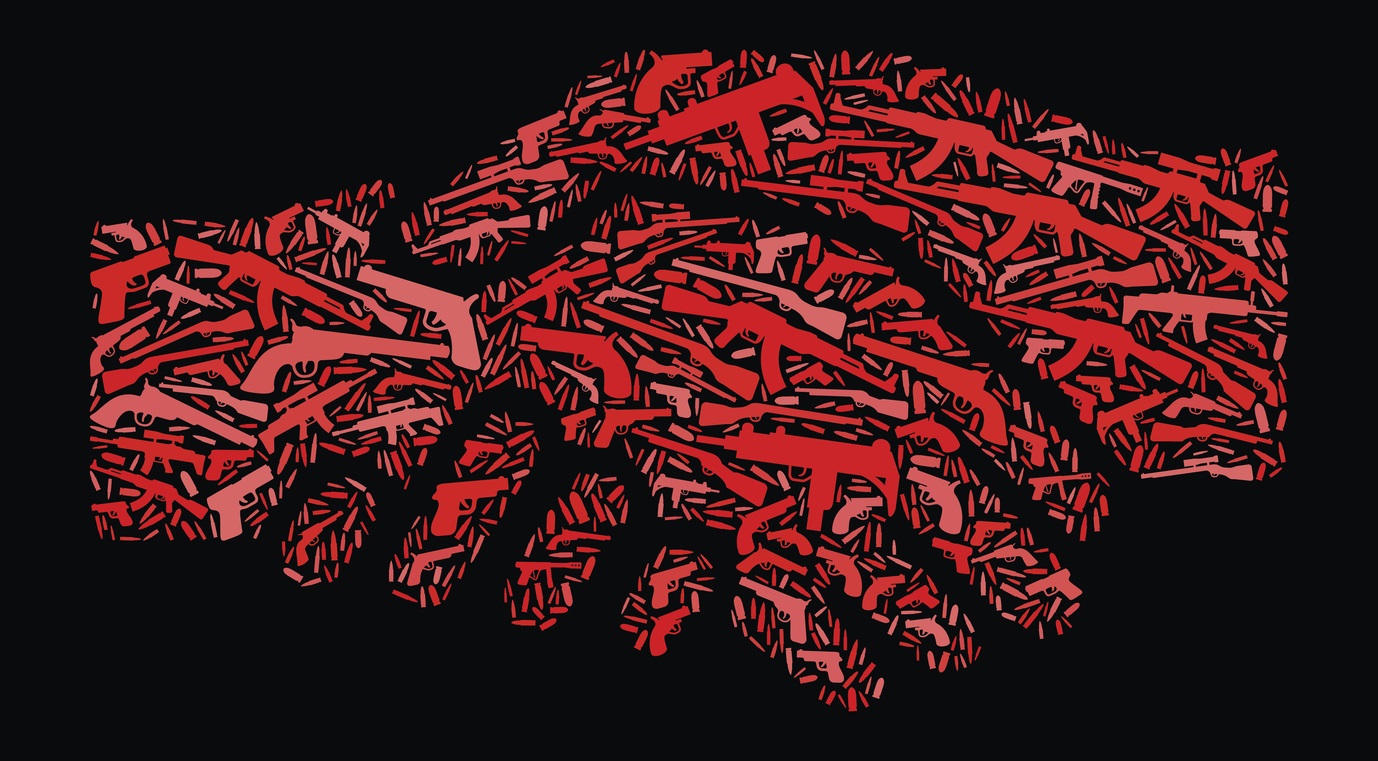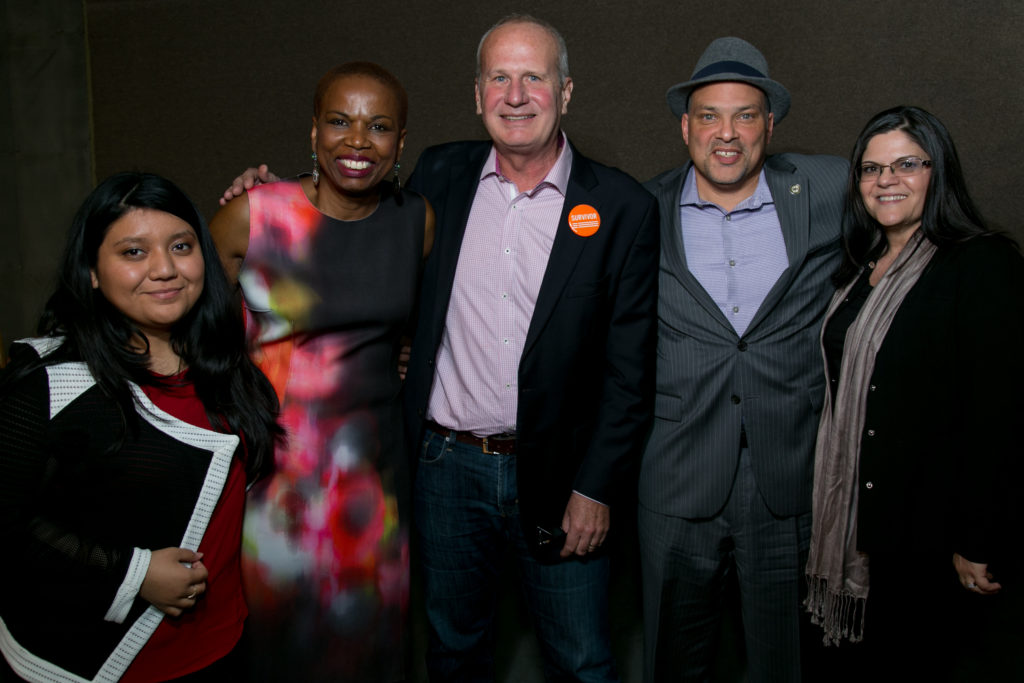
Healing Gun Violence
Healing Gun Violence
In California, an innovative collaborative of funders and community leaders is united around a common goal: to stop the state's gun violence epidemic and elevate community solutions that can be replicated across the country.
Michael is an engaging and smart student at Edison High School in Stockton, where he is finishing his senior year. But unlike most teens his age, he doesn’t spend his free time riding his bike or shooting baskets with his friends. Michael recently told me that he is afraid to go outside for fear of being shot. Instead, he has spent his school years going from home to school and back home, trying to stay safe.
Michael’s story is much too common. In communities across California, I’ve heard story after story of young people deprived of the simple but important pleasures of growing up because our communities are plagued by the daily scourge of gunfire. I’ve heard stories from domestic violence survivors about living in fear of abusers armed with guns. And I’ve heard stories from families torn apart when a loved one committed suicide with a firearm.
Gun violence is a public health epidemic that kills 93 Americans on average every day. This epidemic affects all of us and poses a constant threat to our health and wellness. As philanthropists, it touches every facet of our work. Before our communities can thrive, we must ensure they are safe – and this will take more than new laws and regulations. Philanthropic leaders must step up to the challenge and support solutions to the gun violence epidemic.
Across California, too many young people are deprived of the simple pleasures of growing up because communities face the daily scourge of gunfire.
In the wake of the tragic shooting in San Bernardino in 2015, a diverse group of funders and community leaders came together for a groundbreaking summit to talk about how we can work together to address the gun violence epidemic. The Hope and Heal Fund emerged from that summit as the first California-based pooled fund solely dedicated to stopping gun violence in our state. Today, we have 13 foundation partners and a growing number of individual donors who are investing in innovative solutions across the state.

Hope and Heal Fund emerged from a groundbreaking 2016 summit that brought funders and community leaders together from across California to stop gun violence. Second from left: Judy Belk, president and CEO of The California Wellness Foundation, a charter member of Hope and Heal Fund. Second from right: DeVone Boggan, founder and CEO of Advance Peace.
To me, there are three elements of Hope and Heal’s approach that make the Fund unique, and they are critical to our success.
We’re fostering collaboration. As a donor collaborative, we are able to amplify the power and resources of our members to make an even greater impact. We draw upon the expertise of each of our members and share ideas and lessons learned. Each of our members has a say in the Fund’s direction and brings a unique perspective to the table. This culture of learning and collaboration matches the approach that many foundations support among their staff members, grantees and other partners. As a result, we are working with a shared and holistic vision to address all forms of gun violence and elevate community-based solutions that tackle the root causes of violence. And we are developing a common language that enables us to amplify the narrative that gun violence is a public health epidemic that must be treated, just like any disease.
We’re investing in community solutions that work. Last spring, I embarked on a statewide listening tour to better understand how gun violence is affecting Californians and what communities are doing to combat the gun violence epidemic. I returned home inspired and energized by the cutting-edge strategies that are already working to prevent violence and save lives. In the city of Richmond, California, for example, a violence interruption program called Advance Peace reaches out to young men at the center of gun hostilities, learns from their experiences and places them in high-touch, personalized fellowships. By providing mentorship and economic opportunities, Advance Peace alters the trajectory of these men’s lives and breaks the cycle of violence. This innovative program has contributed to a 71 percent reduction in gun violence in Richmond over the past 10 years. Community initiatives like Advance Peace need support to enhance their impact and replicate their successes. That’s why Hope and Heal is investing in proven solutions that can work in other communities across the country.
We’re changing the narrative. Las Vegas, Nevada. Sutherland Springs, Texas. Rancho Tehama, California. We pay attention to gun violence when mass shootings are in the headlines. We grieve with the victims, and our leaders send their thoughts and prayers. The debate over solutions becomes polarizing, leaving people feeling hopeless. And the news cycle moves on. At Hope and Heal, we’re working to tell a different story by shining a light on the warning signs and root causes of violence. Most people are shocked to learn that gun suicides account for more than half of the state’s gun deaths, and more than half of mass shootings are linked to domestic violence. To find solutions, we must better understand the problem we’re facing.
We also need to spread hope by lifting up success stories like Advance Peace. A news media analysis on gun violence conducted last summer found that only four percent of all the stories on gun violence focused on community-based solutions, while more than half of the stories focused on the political debate mostly related to mass shootings. The Hope and Heal Fund is partnering with Berkeley Media Studies Group to better understand the narrative on gun violence and identify how we can change it to be more solutions-oriented. By developing messages that resonate and identifying the right messengers, we can connect people to the issue of violence in ways that demonstrate how we can tackle this epidemic and work together to solve it.
Philanthropy has the power to shape conversations and scale solutions, and we want to hear your ideas. Join us, and together we can stop the gun violence epidemic and ensure our communities are safe and healthy.
Brian Malte is executive director of the Hope and Heal Fund.
Philanthropy
Project
Addressing the gun violence epidemic in California


